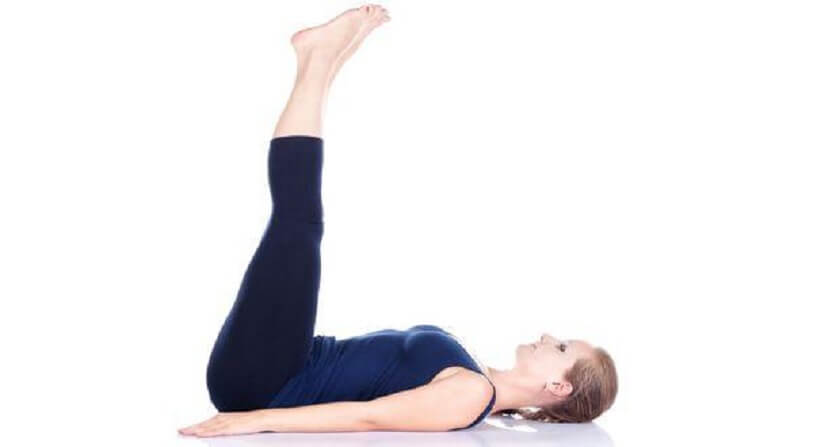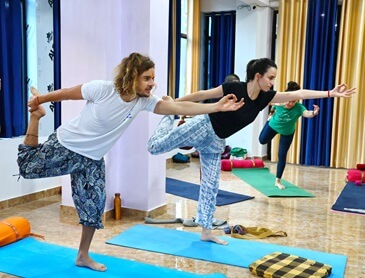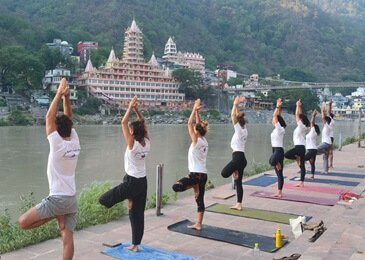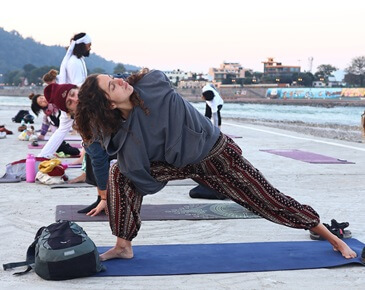
14 Aug. 2019
Uttanpadasana (Raised Legs Pose) – Benefits, Adjustment & Cautions
Uttanpadasana (Raised Legs Pose) The Sanskrit word utthan means 'raised' and pada means 'foot'. Hence the name of the asana. It is a useful asana to perform as it helps to strengthen the abdominal muscles, remove wind and constipation.
Technique Lie flat on the floor, face upwards. Place your legs together with the arms on each side of the body. The arms should remain passive during the whole practice. Close your eyes. Try to relax your whole body for a short period. Breathe out deeply. Then breathe in as deeply as possible. Slowly raise your legs keeping them together and straight. It is important that the arms remain as relaxed as possible. In other words, the arms should have no part to play in raising the legs. The raising of the legs should be achieved by contraction of the abdominal muscles. This is important for it ensures that the abdominal muscles are strengthened and the internal organs massaged. Don't raise the legs too high; the feet should be held so that they are between 30 to 60 cms above the ground.
If you raise the legs higher, then there is less contraction of the abdominal muscles and the asana loses much of its efficacy. Hold your legs in the final raised position while simultaneously holding your breath. Don't strain but remain in the final pose for as long as you can without experiencing any discomfort. Then slowly lower the legs as you breathe out. On reaching the floor completely relax the entire body. When your breathing rate has returned to normal the asana can be repeated. Beginners This asana is deceptive for it looks far easier than it really is. On the other hand, with a little practice it can be quickly mastered.
Reasonably strong abdominal muscles are required to practise it properly (i.e. with the legs raised only a short distance off the ground). With the majority of people this is not the case and so there is normally some difficulty in performing this asana. Under these circumstances a simplified version can be performed. First of all the arms can be utilized to help raise and hold the legs in the final position. Secondly, the legs can be raised higher so that they make an angle of forty-five degrees or even more with the ground. This reduces the contraction necessary in the abdominal muscles. However, the practitioner should progressively try to perform the asana so that the arms remain relaxed throughout the practice and the legs are only slightly raised off the floor. This should be the final goal, even if it takes a few weeks or more. In this way the asana will give its optimum benefits and the condition of the abdominal organs and muscles will greatly improve.
Breathing, awareness and duration Breathing should be normal while lying on the floor, followed by deep inhalation. Practise retention while raising and holding the legs in the final pose. Exhale while lowering the legs. Practise normal breathing while relaxing after completion of the asana. Awareness should be on the abdomen and the breathing pattern. Only hold the final position for as long as you can comfortably do so. Don't strain.
Repeat the asana as many times as you wish, although three times is a reasonable number. Sequence This asana can be done at any time during your practice program. Benefits Utthanpadasana is an excellent asana for strengthening the abdominal muscles, massaging the internal organs, removing wind and eliminating constipation. In this respect .it is particularly powerful when supplemented by pawanmuktasana1. While utthanpadasana stretches the abdomen, pawanmuktasana compresses it. If you suffer from flatulence or constipation you should definitely practise these asanas one after the other. In this context they can be practised at almost any time of the day (apart from after meals), but the best time is early in the morning before going to the toilet.


